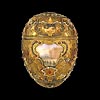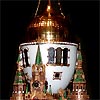- sale
- new items
- lovely beads
- wedding beads
- beads for teens
- for custom order
- newsletter
- recognition
- testimonials
- birthstones
- zodiac signs
- jewelry guide
SHOP BAG
![]() in your bag 0 items
in your bag 0 items
The egg was a symbol of the rebirth of the earth in Pagan celebrations of spring and was adopted by early Christians as a symbol of the rebirth. The egg is widely used as a symbol of the start of new life, just as new life emerges from an egg when the chick hatches out. The ancient Persians painted eggs for Nowrooz, their New Year celebration, which falls on the Spring equinox. At the Jewish Passover Seder, a hard-boiled egg dipped in salt water symbolizes the Passover sacrifice offered at the Temple in Jerusalem.
The pre-Christian Saxons had a spring goddess called Eostre, whose feast was held on the Vernal Equinox, around 21 March. Her animal was the spring hare. Some believe that Eostre was associated with eggs and hares, and the egg symbolized the rebirth of the land in spring. Easter eggs are specially decorated eggs given to celebrate the Easter holiday or springtime.
For Orthodox Christians, the Easter egg is much more than a celebration of the ending of the fast, it is a declaration of the Resurrection of Jesus. Traditionally, Orthodox Easter eggs are dyed red to represent the blood of Christ, shed on the Cross, and the hard shell of the egg symbolized the sealed Tomb of Christ - the cracking of which symbolized his resurrection from the dead.
Easter eggs are a widely popular symbol of new life in Russia, Romania, Poland and other Slavic countries' folk traditions. A batik (wax resist) process is used to create intricate, brilliantly-colored eggs; there are any other decorating techniques and numerous traditions of giving them as a token of friendship, love or good wishes. The celebrated Faberge workshops created exquisite jeweled Easter eggs for the Russian Imperial Court.
Carl Faberge and his goldsmiths designed and constructed the first egg in 1885. It was commissioned by Czar Alexander III of Russia as an Easter surprise for his wife Maria Fyodorovna. On the outside it looked like a simple egg of white enameled gold, but it opened up to reveal a golden yolk. The yolk itself had a golden hen inside it, which in turn had a tiny crown with a ruby hanging inside, reminiscent of the matryoshka nesting dolls.
Empress Maria was so delighted by this gift that Alexander appointed Faberge a "Court Supplier" and commissioned an Easter gift each year thereafter, stipulating only that it be unique and contain a surprise. His son, Nicholas II of Russia continued the tradition, annually presenting an egg each spring to his wife Alexandra Fyodorovna as well as his then-widowed mother.
Sixty nine jeweled eggs were made by Peter Carl Faberge and his assistants between 1885 and 1917, they were produced almost every year. Once an initial design was approved, the work was carried out by an entire team of artisans under Peter Carl Faberge, among them Michael Perkhin, Henrik Wigstrom and Erik August Kollin. The eggs are made of precious metals or hard stones decorated with combinations of enamel and gem stones. Most of these creations themselves contained hidden surprises such as clock-work birds, or miniature ships. The term "Faberge egg" has become a synonym of luxury and the eggs are regarded as masterpieces of the jeweler's art. They are not edible.



